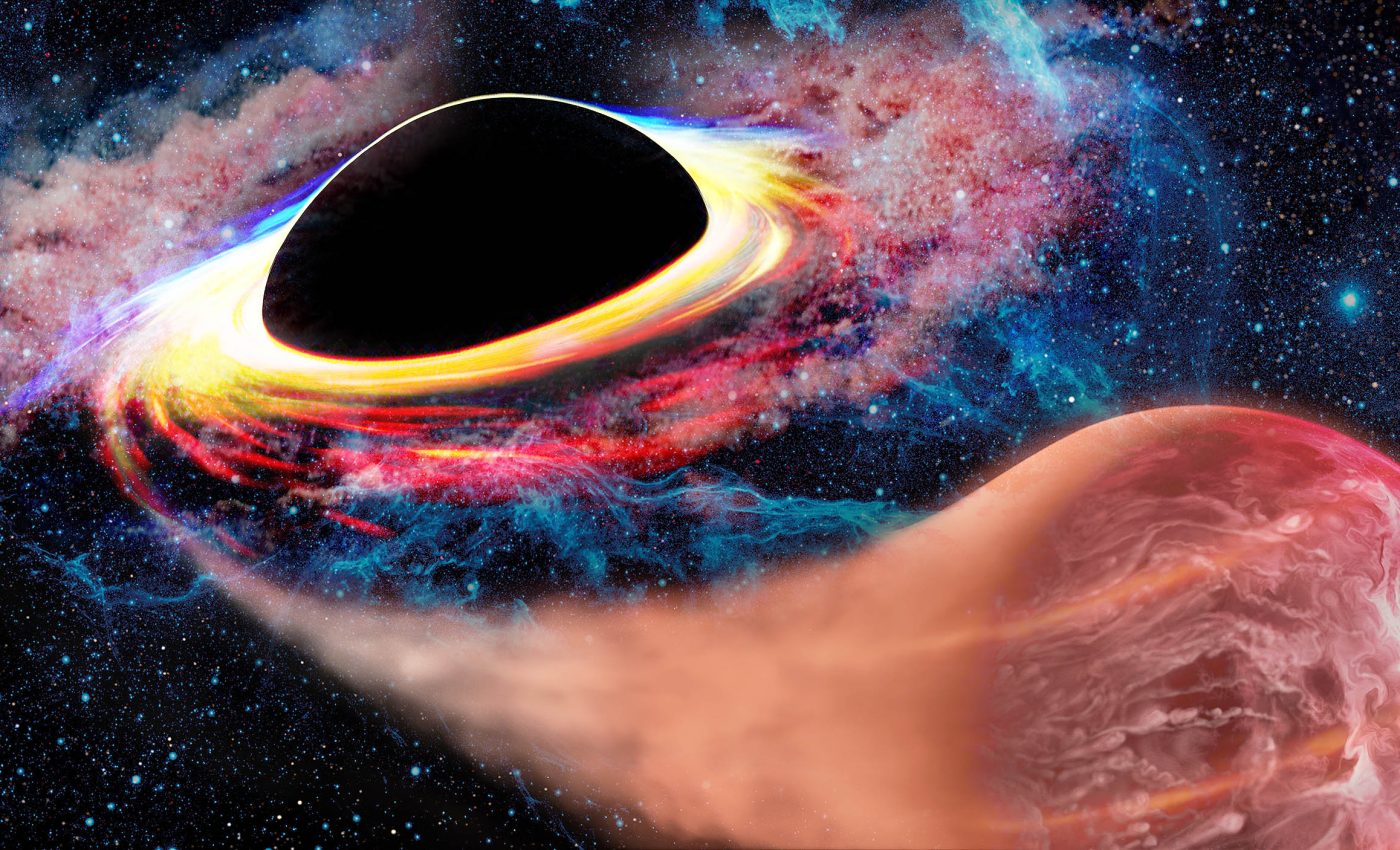
Star survives an encounter with a supermassive black hole, upending current scientific theory
A sudden blue-white flash jolted telescopes in February 2022, marking a dramatic event from a star astronomers cataloged as AT 2022dbl. Two years later, another flare erupted from the exact same spot – almost as if the universe hit replay.
Dr. Lydia Makrygianni of Lancaster University and her colleagues at Tel Aviv University led the campaign that pieced together this cosmic double act.
A tidal disruption event occurs when a star ventures too close to a supermassive black hole. Gravity stretches the star, half the gas falls inward, and a brief beacon of light blazes for months.
Because black holes themselves emit no light, flares offer one of the few direct probes of their size, spin, and appetite.
The star that survived a black hole
“This looks more like a snack than a meal,” said study co-author and director of the Wise Observatory, Professor Iair Arcavi, after the team ruled out gravitational lensing and chance overlap.
AT 2022dbl broke the usual one-and-done script. The second flare arrived 711 days after the first, mirroring its temperature and spectrum yet shining four times fainter.
Both flares were cooler and dimmer than classic accretion disk theory predicts, echoing a decade-long puzzle in optical TDEs.
Their light spectra showed helium and nitrogen lines, which are typical of the so-called Bowen subclass. The hydrogen signal was unusually weak, suggesting that only part of the star’s outer layer was stripped away during each pass.
The decline rates were different. The first event faded quickly – faster than a typical full disruption – while the second faded more slowly, matching what’s known as partial stripping.
Rethinking what black holes eat
This event suggests that stars might lose mass in stages rather than vanishing all at once.
If partial disruptions are common, then many stars may survive their first encounter and return, potentially more than once.
It also raises the question of how different stars respond to tidal forces. Larger or puffier stars might shed more gas, while denser ones could hold together longer.
That variability could reshape how we model star-black hole interactions.
Could two unrelated stars be shredding in the same galaxy so soon? Globally, tidal disruption events (TDEs) happen at a rate of about 1 in 100,000 per galaxy each year.
So, seeing two in just two years in the same galaxy core is extremely rare – less than a one-in-a-thousand chance for a quiet galaxy like this.
Gravitational lensing also fails: matching both the 2:1 brightness ratio and 700 day delay would need a powerful unseen lens directly along the line of sight.
Trapped in orbit, but still alive
Simulations show that a star on a 700-day, highly elliptical orbit around a black hole at that distance could lose outer layers on each pass, yet keep its core intact.
Such orbits can naturally form when a binary star system passes close to a black hole. One star gets flung away while the other is captured – a process known as the Hills mechanism.
Each return should shave off more gas until the core finally succumbs, or until gravitational waves shrink the orbit and silence the fireworks.
Tracking stars and black holes
Until now, astronomers assumed most tidal disruption flares were isolated one-offs.
With AT 2022dbl showing repeat behavior, observatories may need to adjust search strategies to track follow-ups over multiple years.
This also affects how flare candidates are prioritized for follow-up. Events that fade quietly might still have another act ahead, meaning surveys will need better systems to re-flag past coordinates.
If the pattern holds, another flare could ignite in early 2026. A third act would clinch the partial disruption story and reveal whether the second passage still spared the stellar core.
Conversely, silence would imply the 2024 flare finished the job, showing that full and partial disruptions can masquerade as twins.
Beyond one surviving star
Optical-ultraviolet flares consistently radiate only a fraction of the energy expected from swallowing a Sun like star, a “missing energy” problem.
Repeated nibbling could solve part of the deficit by spreading the release over several flares rather than one grand burst.
If many of the events in current catalogs are actually partial disruptions, the true TDE rate may be higher than we think.
Models of disk formation would also need to factor in super-Eddington flows, which can hide energy in winds or jets.
Astronomers will keep AT 2022dbl under close surveillance, eager to see whether the star still has the strength for an encore.
The study is published in The Astrophysical Journal Letters.
—–
Like what you read? Subscribe to our newsletter for engaging articles, exclusive content, and the latest updates.
Check us out on EarthSnap, a free app brought to you by Eric Ralls and Earth.com.
—–













